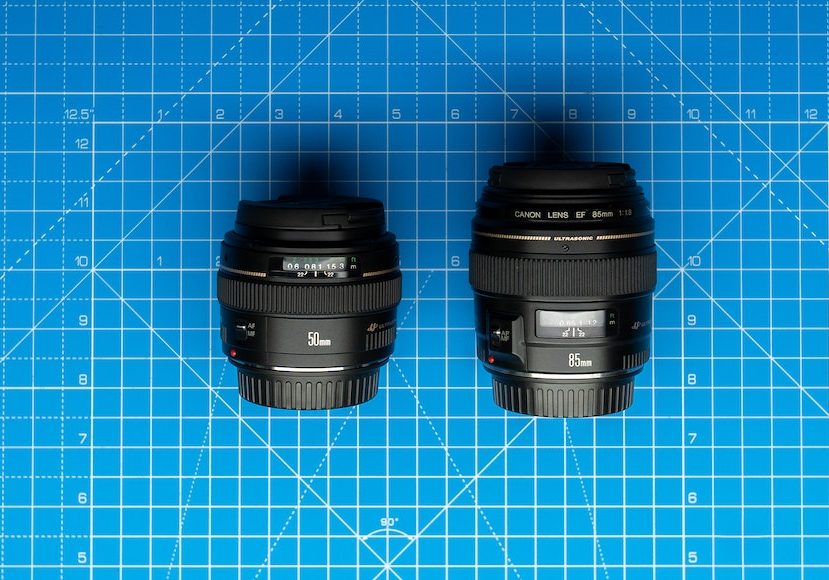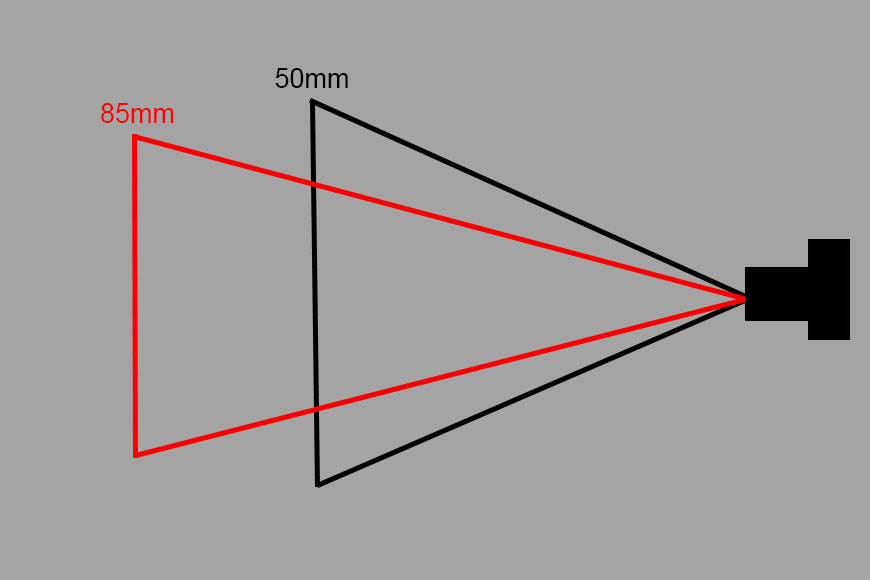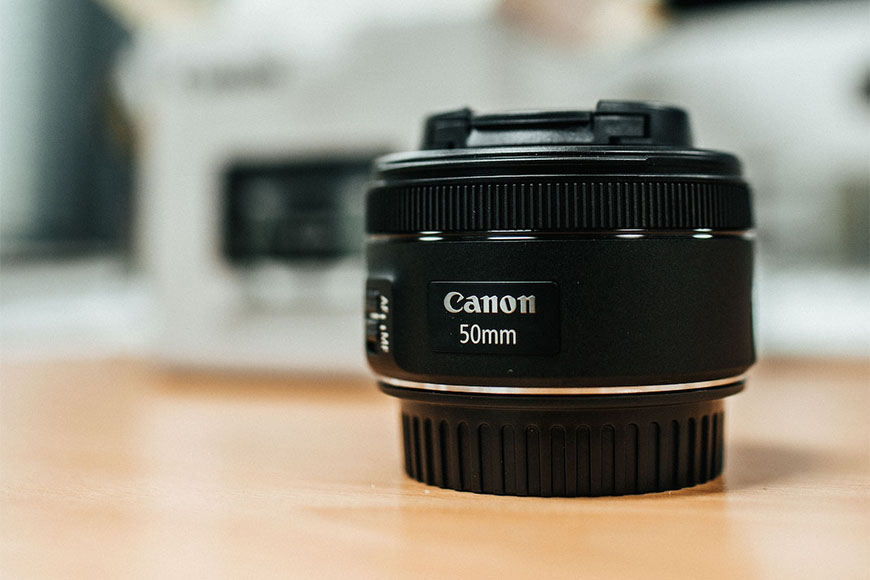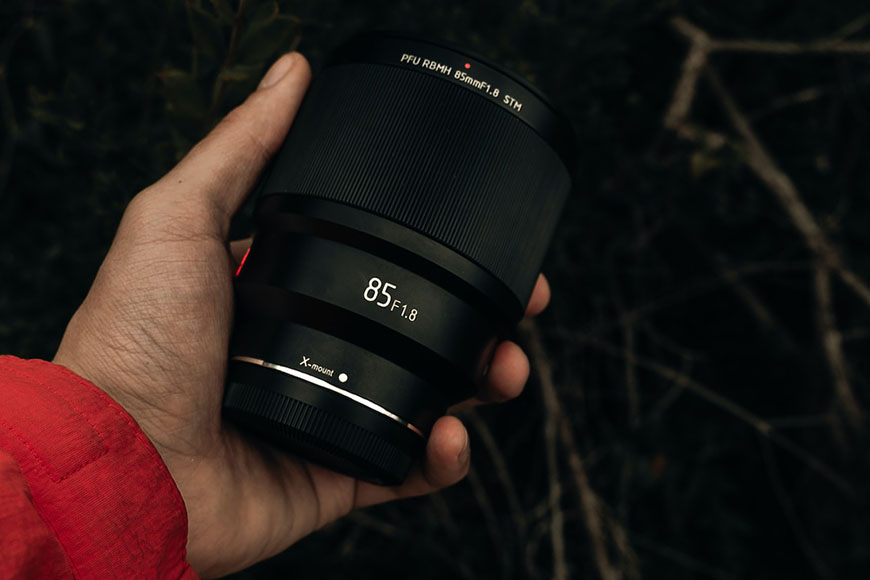
50mm vs. 85mm: Choosing the Best Prime Lens
Dive into our detailed comparison of 50mm versus 85mm to help you make an informed choice of which prime portrait focal length is right for your needs.
Learn | By Jeff Collier
If you’re shooting a portrait, one of the biggest decisions you’ll encounter is choosing between 50mm vs. 85mm lenses.
Both lenses have the ability to deliver stunning results, but they serve slightly different purposes in various shooting scenarios.
Your choice will depend on factors such as your preferred shooting style, the type of photography you specialize in, and your creative vision.
In this article, I’ll discuss the major differences between 50mm and 85mm lenses, including their depth of field, field of view, focal lengths, and more.
If you’re still trying to decide which prime lens to buy next, you should also check out our comparison of 35mm vs 50mm.
Table of Contents
50mm vs. 85mm: Similarities and Differences
50mm lenses and 85mm lenses have unique characteristics and strengths, making the decision between them a crucial aspect of your photography journey.
Here are the biggest differences and similarities between the two:
Focal Length
The most obvious difference between 50mm and 85mm lenses is the focal length—the distance from the center of the lens to the focal points of the lens. In other words, how much of the scene is captured and how large individual elements are in the photo.
A 50mm lens closely mimics the perspective of the human eye, so it’s often considered the standard focal length in portrait photography.
Meanwhile, an 85mm lens offers a shallow depth of field. It brings distant subjects closer and compresses the background. This compression effect can make certain facial features, like the nose, appear slightly more prominent
If you’re one to get up close and personal when shooting portraits, you’ll find that a 50mm lens will produce the most natural-looking results.
However, if you’re aiming for a more artistic and isolated subject with a bokeh effect, the 85mm lens can help you achieve this look.
Field of View

A 50mm lens delivers a wider field of view compared to an 85mm lens, making it a versatile choice for landscape, street photography, and environmental portraits.
On the other hand, an 85mm lens, with its shorter field of view, is particularly well-suited for portraits and isolating subjects from distracting backgrounds.
It allows you to focus on your subject and make them prominently stand out in a photo.
Image Distortion
Distortion in photography can manifest in various ways, with the most common being barrel distortion, chromatic aberration, and vignetting.
Barrel Distortion

Credit: Nicoguaro, CC BY-SA 3.0, via Wikimedia Commons
50mm lenses exhibit minimal barrel distortion. This means that straight lines in the frame, such as the edges of buildings, are less likely to appear noticeably curved outward.
They tend to maintain straight lines relatively well, resulting in images that have a more natural, undistorted look.
Some 85mm lenses, particularly those with wide apertures (e.g., f/12), have a slightly more noticeable barrel distortion, though not as prominent as wider-angle lenses.
Chromatic Aberration

Credit: DrBob at the English-language Wikipedia, CC BY-SA 3.0, via Wikimedia Commons
Also known as color distortion or color fringing, chromatic aberration (CA) appears more frequently in 50mm lenses than 85mm lenses, especially at wider apertures.
Chromatic aberration is less of an issue with 85mm lenses because it often incorporates specialized glass elements and coatings to prevent such effects.
Vignetting
Vignetting creates a darker border, often as a blur or a shadow, at the periphery of photos. This effect is less pronounced in 50mm lenses, especially when shooting at narrower apertures. It’s more notable in 85mm lenses at similar apertures.
Versatility
If you’re a junior photographer, still experimenting and trying out niches, you’ll find more value with 50mm lenses due to the versatility they offer.
50mm lenses work for a variety of scenarios, ranging from landscape photography to street photography to portraiture.
Starting with a 50mm lens can be a great way to build a strong foundation in photography. They’re cheap, fast, and lightweight, often costing less than $150.
Their ability to closely imitate the human eye’s perspective makes them an excellent choice for those who want to explore different photographic styles without committing to specialized lenses.
The compact size and maximum apertures make them discreet and ideal for capturing everyday moments, family gatherings, and events.
They work well with cross-sensor and full-frame cameras, plus they can be used in video and macro photography (as long as you reverse mount the lens).
This isn’t the case with 85mm lenses. With its narrower field of view and specialization in portraiture, it’s more limiting to those still exploring various niches.
Creamy Bokeh

Helios 40-2 85mm f/1.5. Credit: David Yu, CC BY-NC 2.0 DEED, via Flickr.
Bokeh is a term that describes the dream-like, out-of-focus background in photographs.
Both 50mm and 85mm can produce beautiful bokeh, but the 85mm can do it more effortlessly and naturally.
Even when you’re shooting at a wide aperture—1.2, 1.4, 1.8, and 2.0—you’re going to get more bokeh than the 50mm.
85mm lenses excel in isolating the subject from the background with the help of their narrow field of view and longer focal length.
This creates a stronger separation between the subject and the background, producing an even creamier bokeh.
Depth of Field

50mm Bruno Salvadori (left) / 85mm Godisable Jacob (right)
Both 50mm and 85mm lenses have a fixed focal length, meaning that you can’t zoom in or out like traditional zoom lenses. To change your composition, you have to move closer or away from your subject.
However, the key distinction lies in the working distances: when using an 85mm lens, you’ll typically find yourself standing at a distance of approximately 2.8 feet to achieve focus, whereas a 50mm lens only demands about 1.15 feet.
The longer working distance of an 85mm lens is especially beneficial in portrait photography, as it helps create a less intrusive environment for your subjects.
It allows for more natural interactions and expressions, making 85mm the go-to choice for many portrait photographers.
Conversely, the shorter focusing distance of a 50mm lens can be advantageous when you want to capture more dynamic and close-up shots.
It’s suitable in scenarios where you want to emphasize details or engage more closely with your subjects or scenes.
Which Focal Length Should You Use? 85mm or 50mm
The choice between a 50mm lens and an 85mm lens depends on your creative vision, your preferred shooting style, and the type of photography you’re pursuing.
When to Use a 50mm Focal Length
A 50mm lens is a photographer’s all-rounder – that’s why it’s often referred to as a nifty fifty.
It can be used for a multitude of shooting scenarios, whether it’s landscape photography, street photography, environmental portraits, and everything in between.
It’s versatile enough to capture everyday moments, even in low-light situations.
Its natural depth of field gives you creative control over your shots, and its wider field of view lets you draw closer without being too conspicuous.
There’s also the fact that it’s a lot more budget-friendly than 85mm lenses, making it a good choice for beginner photographers.
When to Use an 85mm Focal Length
An 85mm lens is best used for portrait photography.
It’s known for its ability to create beautiful, creamy background blur, making it suitable for headshots and candid moments.
Since it has a longer reach, you don’t have to move near a subject to capture it.
This makes it excellent for wildlife photography, where you need to keep your distance.
On the other hand, if you tend to work in controlled studio environments, you’ll appreciate the striking, posed portraits an 85mm lens creates.
Beyond portraits, the 85mm lens can emphasize intricate details of your subject, whether it’s a close-up of a person’s eyes or the wings of a fly.
Its longer reach allows you to capture fine details with clarity and precision.
Pros and Cons of Using a 50mm Lens

Credit: Luis Quintero
Pros
- Suitable in a wide range of photography genres and scenarios, making it an excellent all-purpose lens
- Closely mimics the perspective of the human eye, allowing you to capture natural and true-to-life images—ideal for storytelling and documentary-style photography
- Compact and lightweight, making it convenient for travel and everyday photography
- More budget-friendly than lenses with longer focal lengths, so they’re more accessible to photographers of various skill levels
- Produces detailed and crisp images across the frame, with minimal distortion
Cons
- Not the ideal lens choice for extreme close-up macro photography
- While it can produce background blur, it isn’t as pronounced as 85mm at the same wide aperture
Pros and Cons of Using an 85mm Lens

Credit: Atahan Demir
Pros
- Creates aesthetically pleasing background blur with minimal setup
- Longer focal length allows you to separate the subject from the background effectively
- Though mostly known for portraiture, an 85mm lens can also excel in event photography, fashion, wildlife, food photography, and certain types of landscape photography
- Allows you to remove background distractions, making it easier for the viewer to focus on your main subject
- Doesn’t compress facial features as much as smaller focal lengths. It gives your subject a more flattering look, reducing the need to mess with resizing in post-production
Cons
- Costs much higher compared to other prime lenses
- Often larger and heavier than standard zoom lenses or smaller prime lenses
- Isn’t ideal for shooting in tight spaces
- Requires more time to lock focus, especially in dimly lit environments














